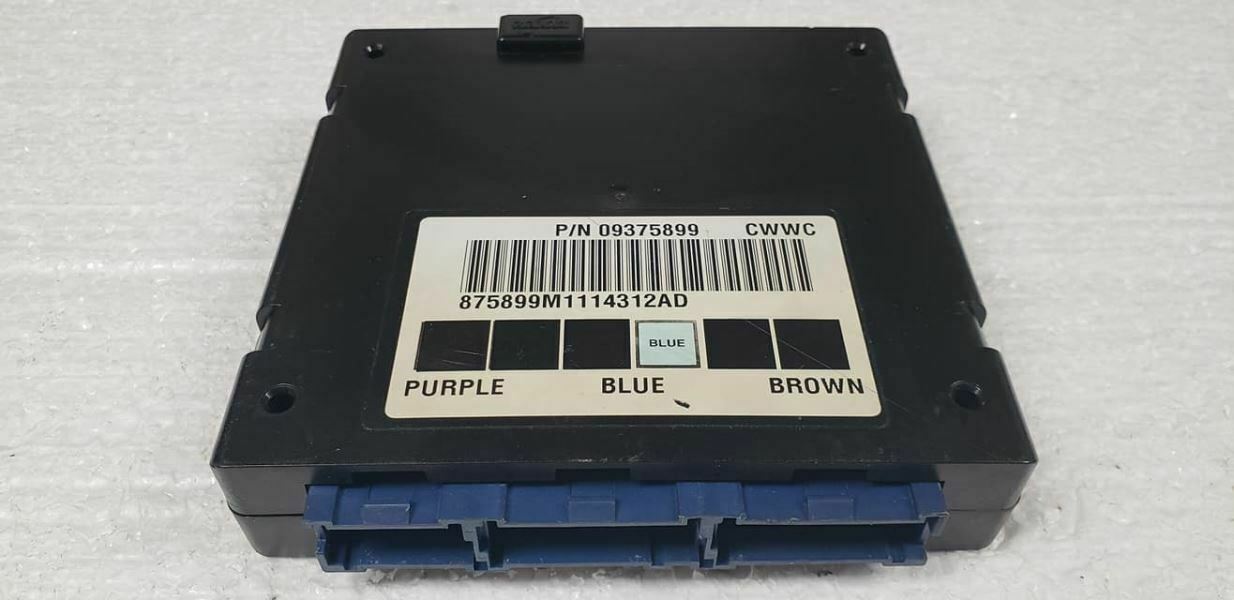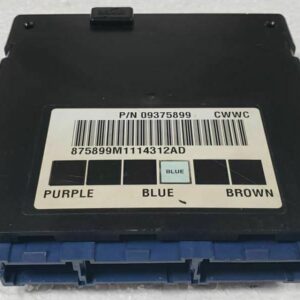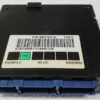If you’re dealing with bizarre electrical gremlins in your 2001 GM truck or SUV, you’ve come to the right place. As a technician with over two decades of experience, I’ve seen it all: windows with a mind of their own, security lights that won’t turn off, and dashboards lit up with warning messages. More often than not, the culprit is a failing Body Control Module (BCM). This isn’t just a part; it’s the central command center for your vehicle’s body electronics, and when it fails, it can make your reliable truck feel haunted.
This isn’t just a replacement part; it’s a complete solution. We take a high-quality BCM and flash it with the latest official GM software, specifically matched to your truck using its unique Vehicle Identification Number (VIN). This means you get a module that’s ready to install right out of the box, saving you the time, hassle, and high cost of a dealership visit for programming. This is the definitive fix for restoring the functionality you depend on every day.
Is Your GM Truck Acting Possessed? Common BCM Failure Signs
- ✔️ Power windows, door locks, or mirrors operating erratically or not at all.
- ✔️ The security or anti-theft light is flashing, often causing a no-start condition.
- ✔️ Interior dome lights or dashboard lights staying on or failing to turn on.
- ✔️ False warning messages on the driver information center, such as “Service 4WD”.
- ✔️ Diagnostic trouble codes (DTCs) related to communication loss (U-codes) stored in other modules.
- ✔️ Horn, wipers, or radio functioning intermittently.
A Straightforward Guide to Installation
- ✔ Safety First: Always disconnect the negative terminal from your vehicle’s battery before starting work.
- ✔ Locate the BCM: On these 2001 GM models, the BCM is typically found under the driver’s side of the dashboard, often mounted to the left of the steering column.
- ✔ Disconnect Wiring: Carefully press the release tabs on the multiple electrical connectors and pull them straight out from the module. Do not force them.
- ✔ Remove the Old Module: Unfasten the bolts or clips holding the BCM in its mounting bracket and remove it from the vehicle.
- ✔ Install Your New BCM: Position the new, pre-programmed module in the bracket and secure it. Firmly plug in all the electrical connectors until they click into place.
- ✔ Power Up: Reconnect the negative battery terminal.
- ✔ Final Check: Turn the key to the ‘ON’ position (without starting the engine) and test all body functions—windows, locks, lights, etc.—to confirm proper operation.
From the Diagnostic Bay: The Case of the Haunted Tahoe
A customer brought in a 2001 Tahoe with a list of complaints that seemed unrelated. The radio would shut off randomly, the power locks would cycle while driving, and the security light would occasionally flash, preventing it from starting. They had already replaced the battery and alternator. In the shop, my scan tool showed a flood of communication errors between modules. This is a classic sign. Instead of chasing individual symptoms, I went straight to the BCM. I found that internal corrosion, likely from a minor windshield leak over the years, was causing the BCM to send garbage data across the network, disrupting every other module. A new, correctly programmed 2001 Suburban BCM (the same part) restored network stability and fixed every single issue at once.
Important Final Steps After Installation
While this module is programmed for a plug-and-play experience, some vehicle systems may require a ‘handshake’ with the new BCM. Please be aware of the following potential procedures:
- Airbag System Sync: If the airbag warning light is illuminated after installation, a ‘Setup SDM Primary Key in BCM’ procedure is needed. This syncs the airbag system with the new BCM and requires a professional-grade diagnostic tool. This is only necessary if the light is on.
- Brake Pedal Position Relearn: On some models, a brake pedal position sensor recalibration might be required to ensure correct brake light and traction control operation. This also requires a capable scan tool.
Note: There is no core charge for this BCM. You can keep your original part.
Verified Vehicle Compatibility
This module is a direct replacement for part numbers 09375899, 9392990, 09370249, and 19180223. It is guaranteed to fit the following 2001 models:
- ✔️ 2001 Chevrolet Tahoe
- ✔️ 2001 Chevrolet Suburban 1500 & 2500
- ✔️ 2001 Chevrolet Silverado 1500
- ✔️ 2001 Chevrolet Silverado 2500
- ✔️ 2001 Chevrolet Silverado 3500
- ✔️ 2001 GMC Yukon
- ✔️ 2001 GMC Yukon XL 1500 & 2500
- ✔️ 2001 GMC Sierra 1500
- ✔️ 2001 GMC Sierra 2500
- ✔️ 2001 GMC Sierra 3500
Frequently Asked Questions
Frequently Asked Questions
What exactly does ‘programmed to my VIN’ mean?
It means we load the specific factory software from GM that matches your truck’s exact build sheet—including options like 4×4, power seats, or specific lighting. This ensures all features work correctly without requiring a trip to the dealer for expensive programming after installation.
Do I need to send my old BCM back to you?
No. There is no core charge associated with this part. You can keep your original module or dispose of it responsibly.
Why is my airbag light on after installing the new BCM?
The BCM and the airbag’s Sensing and Diagnostic Module (SDM) are linked for security. If the light is on, they need to be re-synced using a professional scan tool. This procedure, often called ‘Setup SDM Primary Key in BCM,’ is straightforward for any qualified technician.
Will this fix my truck’s security system problem?
Yes, in most cases. The BCM is integral to the Passlock security system on these trucks. A faulty BCM is a very common reason for a flashing security light and a no-start condition. This programmed module is designed to resolve that communication failure.
Is this a difficult part to replace myself?
For someone with basic hand tools and a little patience, the physical replacement is not difficult. It’s typically located under the driver’s dash and involves swapping a few connectors. Just be prepared that a post-installation sync procedure with a scan tool may be necessary depending on your vehicle.



